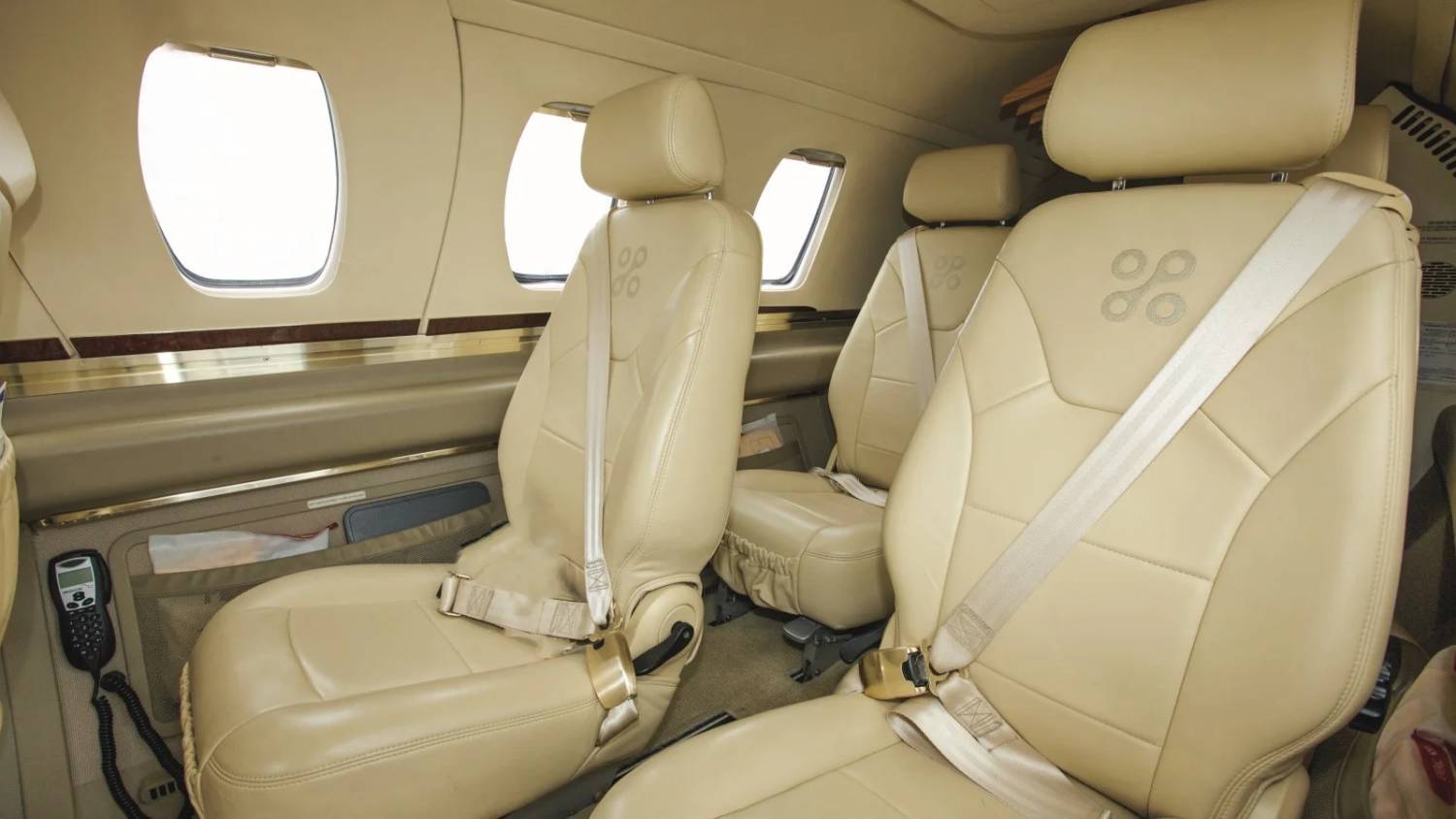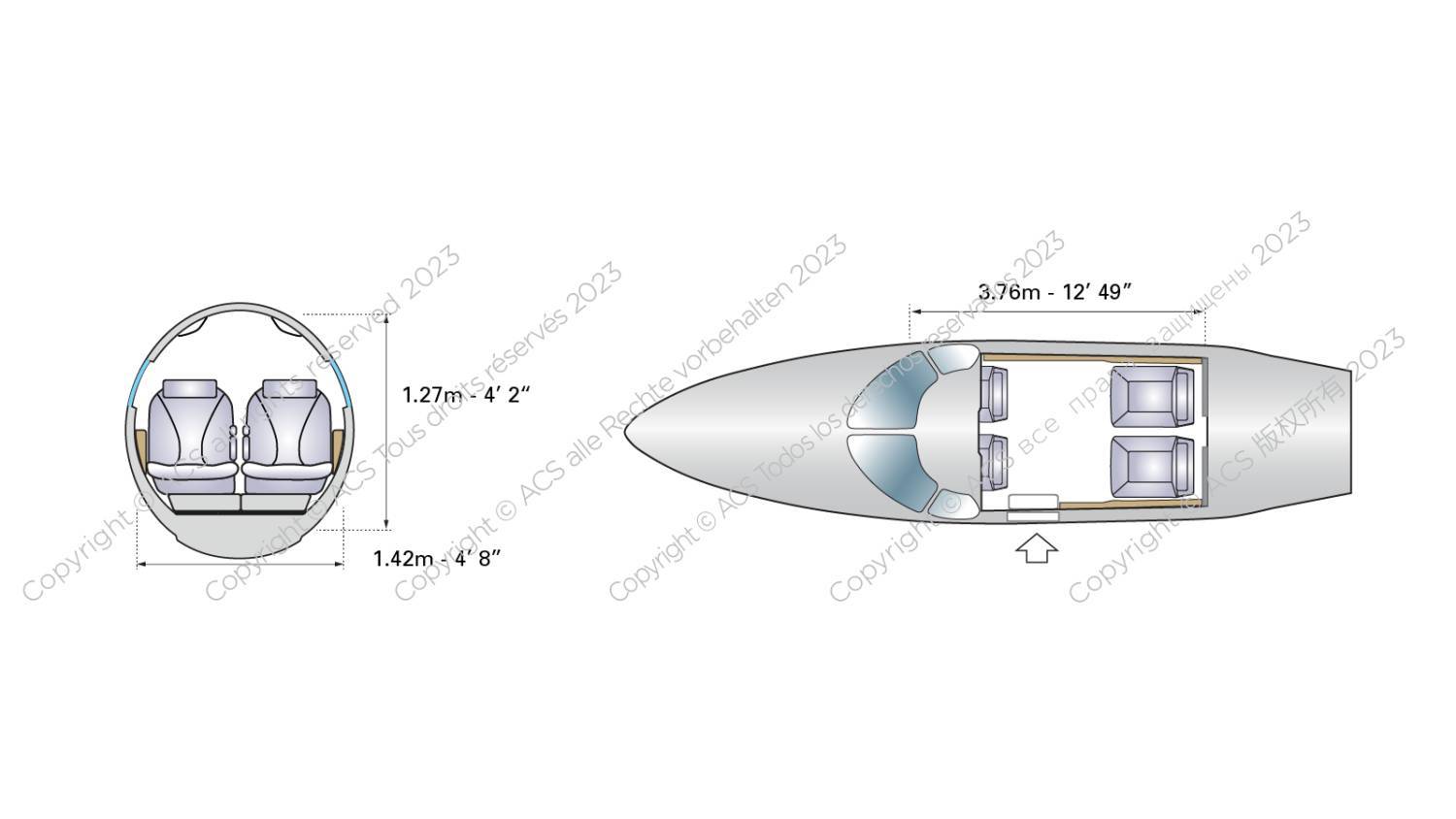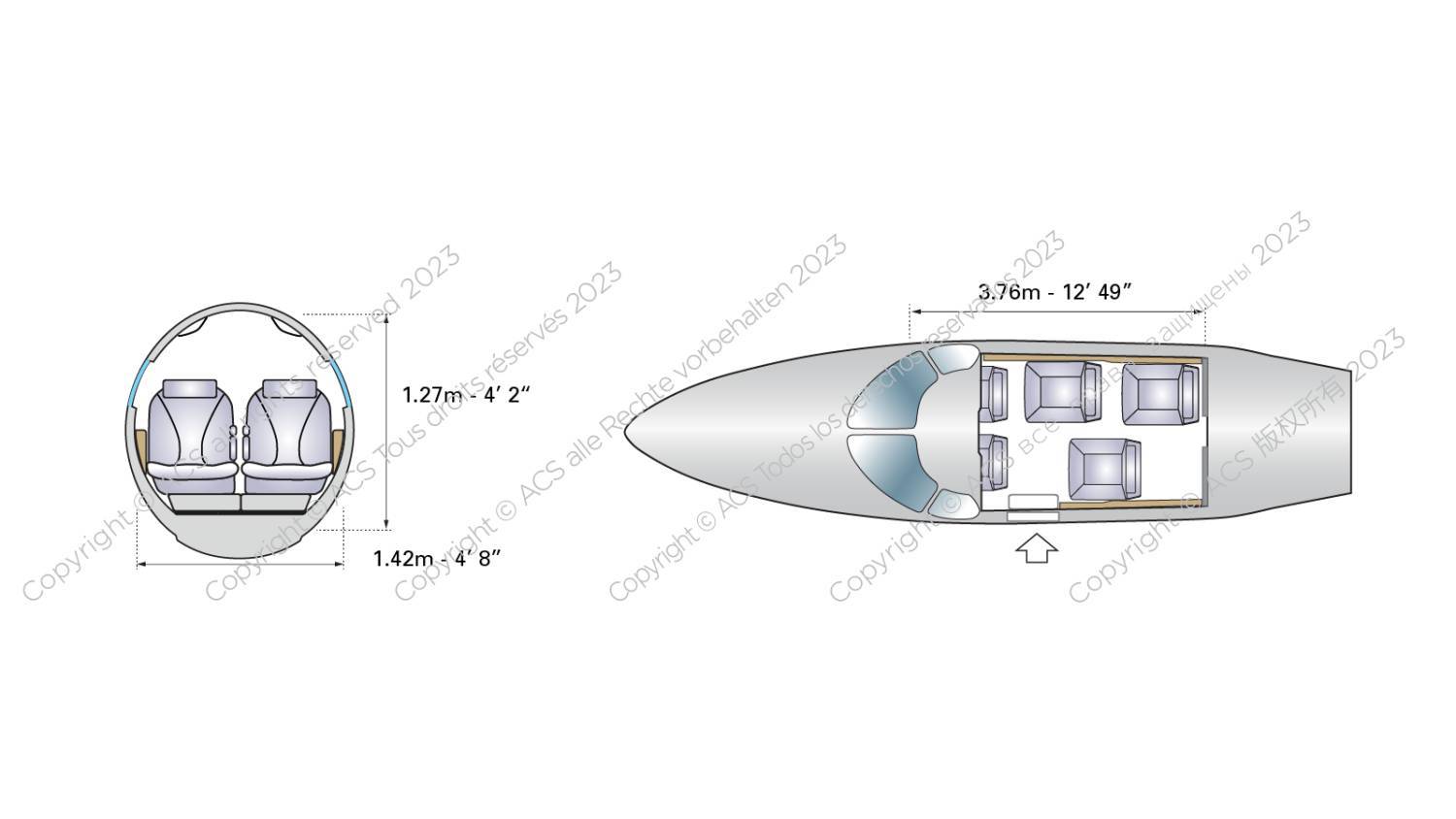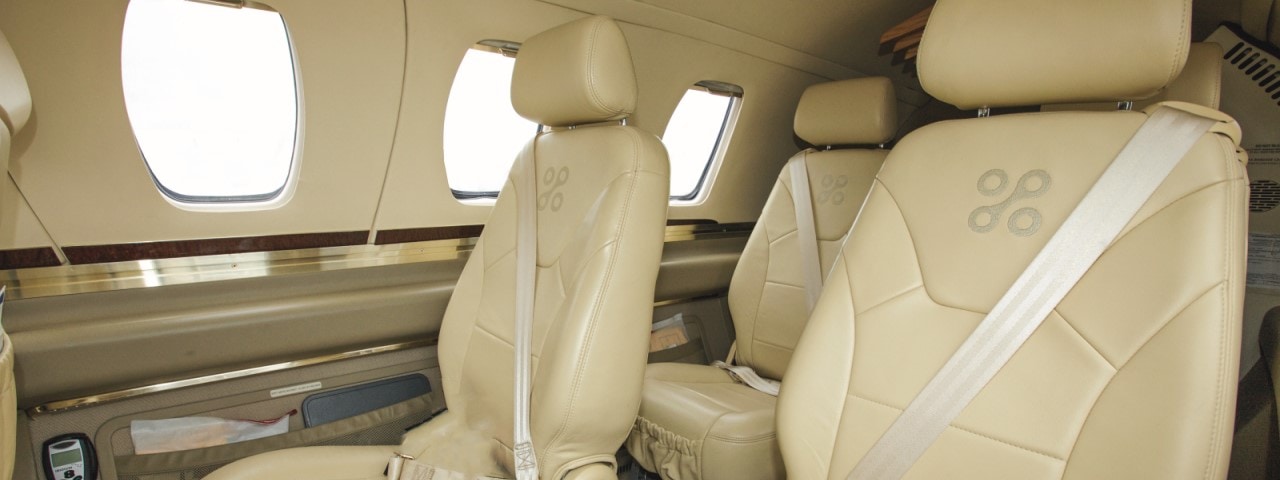




ECLIPSE 500
介紹
- Passengers 4
A revolutionary very light jet with lots to offer, the Eclipse 500 is the ideal charter option for getting to your destination quickly and efficiently.
About this aircraft
- The Eclipse 500’s maiden test flight was in 2002. US certification came in 2006 and deliveries began in 2007.
- The cabin can be configured with two, three or four forward-facing seats. A further passenger can sit in the cockpit with a single pilot if the aircraft is owned, but this option isn’t available for charter.
- The aircraft is capable of flying from London to Cannes or New York to Chicago.
- There’s space in the hold for about two suitcases on an Eclipse 500.
- Production of the Eclipse 500 halted in 2008. The Eclipse 550 upgrade received FAA production certification in 2012.
Despite Eclipse Aviation’s financial struggles, the Eclipse 500 competes with other light jet household names like the Citation Mustang and Phenom 100. Its light aluminium airframe and modern engines give it a marked advantage when it comes to fuel efficiency.
Interior design

The Eclipse 500’s air-conditioned and sound-proofed cabin is fitted with two, three or four club-style seats with leather armrests. The interior is sleek and stylish, with all-LED upper lighting, wood trim, a work/dining table and power outlets. There’s no lavatory onboard.
Below are the typical configurations found on an Eclipse 500.



Interesting facts to learn before you fly
- The Eclipse 500 can operate on paved, grass or dirt runways.
- It’s quieter than many other multi-engine, turboprop and piston aircraft.
- The 500 and upgraded 550 are ‘air taxis’ designed for short journeys, with spacious four-seat interiors but no lavatory.
Technological features
Pioneering new aircraft manufacturing techniques were developed to make the Eclipse 500’s all-metal airframe cost-effective. These included friction stir welding, where the skin is welded rather than riveted to the underlying aluminium structure, and anti-corrosion bonding. The building process was also revolutionised taking inspiration from the automotive industry, leading to a more robust cabin that could be assembled by one crew in a single shift.
The Eclipse 500 is powered by two Pratt & Whitney Canada PW610F medium bypass turbofan engines, rated at 4.00kN take-off thrust. Inside, the Avio Avionics Suite features an integrated flight management system, Class 3 E-Charts and XM satellite weather. The 13 microprocessors in the IS&S displays control all major aircraft systems. Dual WAAS/SBAS Beta-3 GPS receivers from IS&S are utilised for precision navigation.
History
The Eclipse 500 took its maiden flight in 2002 powered by Williams EJ22 engines, which were replaced with Pratt & Whitney Canada PW610F engines prior to its first official flight in late 2004. Deliveries commenced in 2007 and over 250 aircraft were built. The revolutionary light jet was likened to an SUV with wings.
The upgraded Eclipse 550 combined the 500’s all-aluminium airframe and engines with improved avionics. Deliveries began in 2014 and production ceased in 2017.
Manufacturer
Former Microsoft executive Vern Raburn founded Eclipse Aviation in 1998 with financial backing from Bill Gates. The company’s first aircraft, the revolutionary Eclipse 500, controversially won the National Aeronautic Association’s Collier Trophy for 2005 despite only the prototype having flown.
Eclipse Aviation developed a second aircraft, the Eclipse 400, but went bankrupt before production started. The company was rescued by software entrepreneur Mason Holland and Air Force colonel Mike Press, relaunching as Eclipse Aerospace in 2009. The new owners secured U.S. certification for the Eclipse 500 and released the upgraded Eclipse 550.
Following slow sales, Eclipse merged with turboprop maker Kestrel Aircraft to form One Aviation in April 2015. The business later entered bankruptcy and the Eclipse aircraft programme’s assets were purchased by AML Global Eclipse in 2021.
Cost
Depending on factors like age and condition, the price of a used Eclipse 500 can range from $750,000 to $940,000 (USD).
Charter rates
Charter rates for the Eclipse 500 vary depending on the length of your journey and the airports you’re flying in and out of.
If you’d like to charter a Eclipse 500,
for a quote today. For information on other charter options, browse our list of available private aircraft.
Wet lease rates
ACMI (Aircraft, Crew, Maintenance, Insurance) wet lease rates for the Eclipse 500 vary depending on the age of the aircraft, lease term length, number of guaranteed block hours and average cycle ratio. Contact us for a personalised quote.
Key Details
•Aircraft Type: Very Light Jet
•Passengers: Up to 4
•Cruise Speed: 694 KM/H (431 MPH)
•Range: 2084 KM (1296 Miles)
Specifications:
•Luggage Space: 26.1 ft³
•Enclosed Lavatory: No
•Flight Attendant: No
•Pressurised Cabin: Yes
條款及細則
Terms and Conditions for Private Aircraft Charter
1.Cancellation and Refund Policy
Once the booking is confirmed, all orders are non-cancellable and non-refundable. Please ensure all travel arrangements are carefully reviewed before making a reservation.
2.Flight Schedule Changes
Requests to change flight times or destinations must be submitted at least 48 hours in advance and are subject to aircraft and crew availability. Changes may incur additional charges.
3.Flight Delays and Cancellations
In the event of delays or cancellations caused by weather, technical issues, or other force majeure events, we will make every effort to reschedule the flight but will not be liable for any additional costs or compensation.
4.Crew Arrangements
All flights are operated by professional crew members. Crew assignments are determined by the company and cannot be changed or adjusted based on passenger requests.
5.Baggage Restrictions
Each aircraft has specific baggage weight and size limits. Please confirm baggage requirements at the time of booking. Excess baggage may incur additional charges or be refused for transport.
6.Passenger Safety and Conduct
All passengers must comply with the instructions of the crew. The company reserves the right to refuse service to passengers who violate safety regulations or disrupt the experience of others.
7.Flight Time and Overtime Charges
If the flight exceeds the scheduled duration, additional charges may apply. These charges will be calculated based on the aircraft type and the length of the delay.
8.Force Majeure
In the event of natural disasters, political unrest, or other force majeure events that prevent the flight from operating as scheduled, we will make every effort to reschedule the flight but will not be responsible for additional costs or liabilities.

